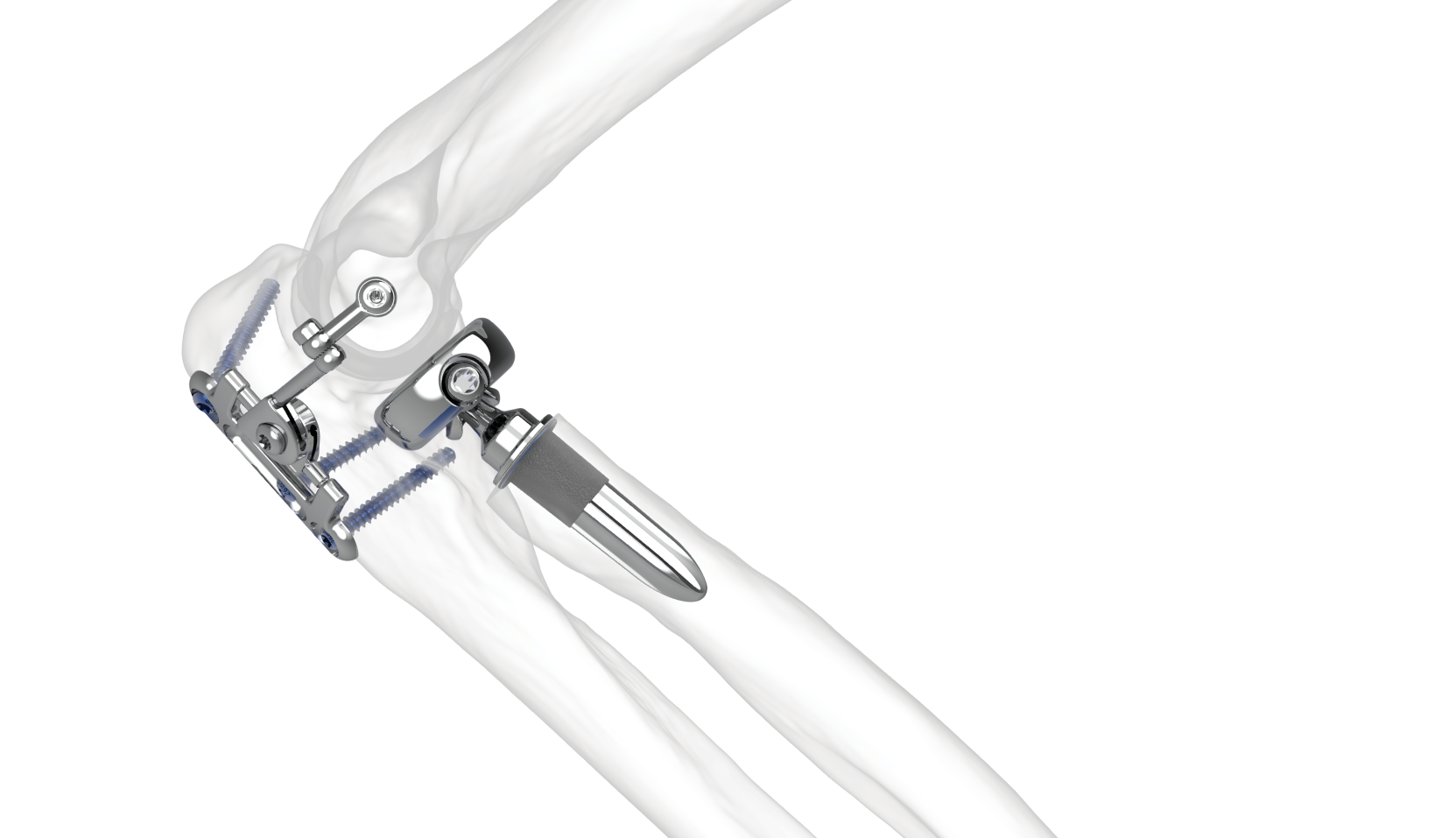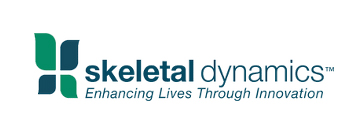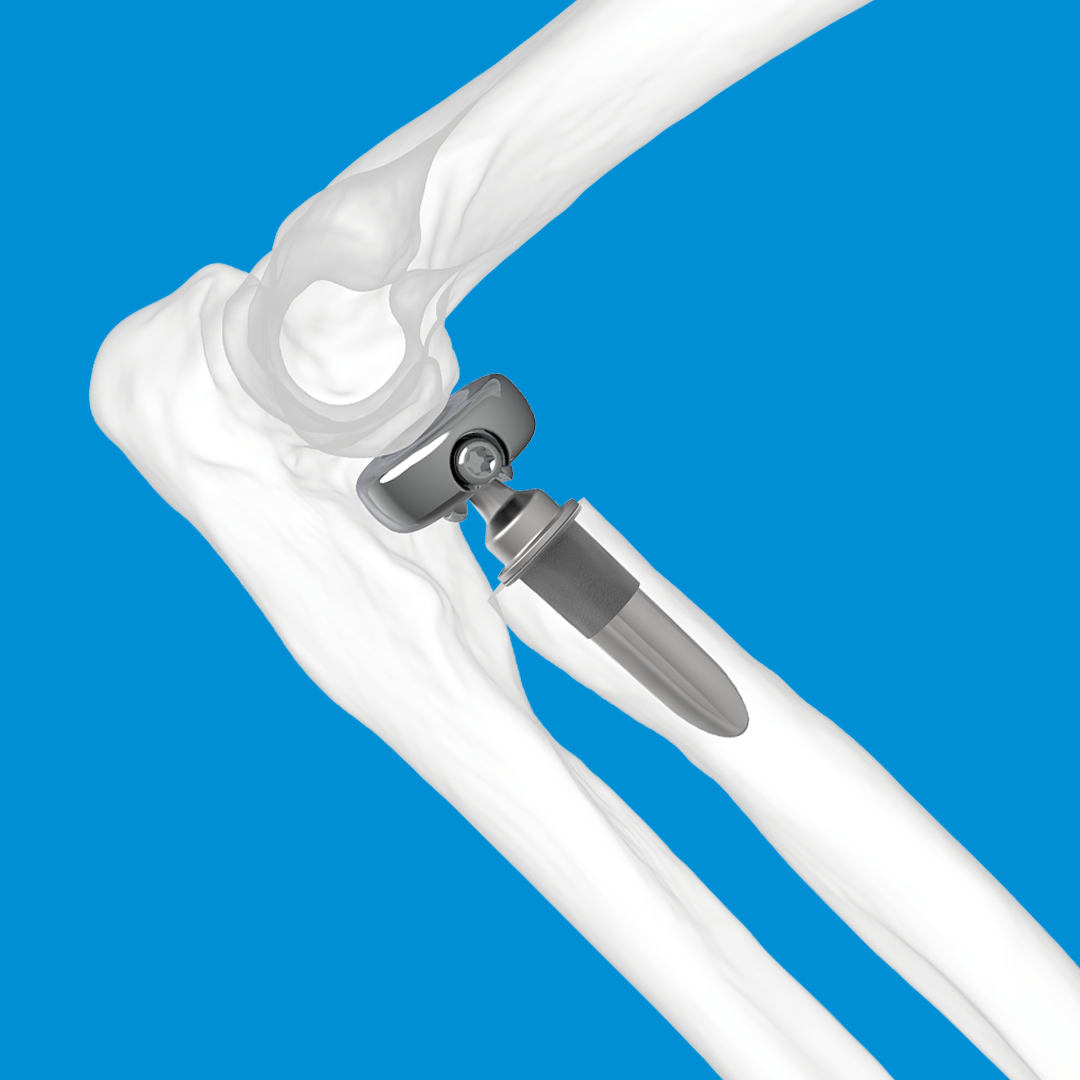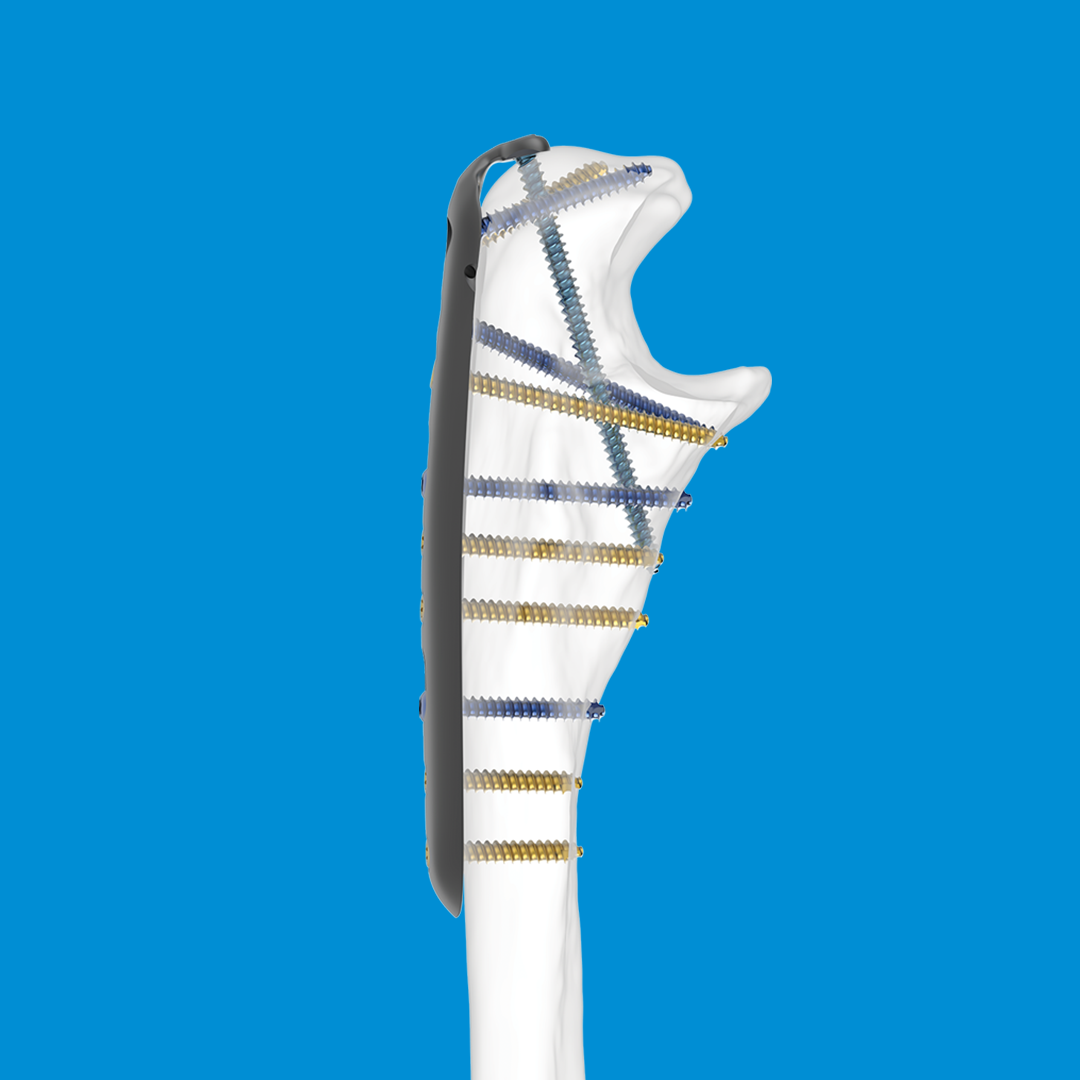

IJS®-Elbow
Features
- Stabilizes the internal elbow joint
- Permits early active motion
- Reduces inconvenience and complications of external fixation devices
IJS®-Elbow System
The IJS®-Elbow System is part of Skeletal Dynamics’ distal elbow set, which allows for active mobilisation and functionality of the elbow. The IJS® provides temporary stabilisation of the elbow joint after elbow trauma injuries, or other events that result in chronic elbow dislocation. Patients experiencing elbow instability can be treated with this system. The IJS® Elbow system comprises:
- Universal titanium IJS®-Elbow Construct
- Multiple-sized CoCr humeral axis pins
- Stainless steel K-wires for guiding optimal prosthesis alignment (not to be implanted)
- System Specific Instrumentation
INTERESTED IN IJS®-ELBOW?
If you would like more information regarding Skeletal Dynamics’ IJS®-Elbow System.
Interested in the IJS®-Elbow ?




Founded in 2007 by Dr Jorge Orbay, MD, Skeletal Dynamics set out to provide innovative, science-based solutions to solve and understand the clinical challenges of upper extremity surgery and unmet clinical needs. Skeletal Dynamics is the only medical device company that is 100% solely focused on the upper extremities. Distributors of Skeletal Dynamics are selected based on individual integrity, industry experience and clinical knowledge and LEDA is proud to be the leading UK orthopaedic distributor for Skeletal Dynamic products including:
Frequently Asked Questions
Elbow dislocation is the result of the radius and the ulna moving out of place and becoming separated from the humerus. In cases of extreme elbow trauma, this results in complete dislocation. This is where the joint surfaces of the elbow are completely separated. Partial elbow dislocation can cause disruption to elbow ligaments and forearm bones, resulting in elbow instability.
Chronic elbow dislocation refers to elbow dislocation that has not improved and has remained dislocated over an extended period of time(3 weeks or more). Any natural changes to bones and soft-tissue that occur during this time can prevent a successful closed reduction.
Olecranon fractures are breaks that occur at the proximal end of the ulna. As this pointy bit of bone protrudes out from the curvature of the arm, it is a relatively common type of fracture. Olecranon fractures can be isolated or form part of a more complex elbow trauma injury.
Patients will often feel as though the elbow is likely to pop out of place, particularly when putting pressure on the joint. This can happen most commonly when pushing off from a surface. Elbow instability can also create sensations of the joint catching, locking or clicking.
The IJS®-Elbow System should not be used if the patient has the following: sepsis, soft tissue, active or latent infection, insufficient quantity or quality of bone (bone loss greater than 30% of the total articulation or involving an entire column of the distal humerus, coronoid bone loss of 50% or more), open growth plates. It should also not be used in pediatric patients or patients cannot(or will not) follow post operative care instructions.
Elbow instability is defined by a looseness in the joint that typically occurs due to elbow trauma. There are three types of elbow instability.
- Posterolateral rotatory instability – a common type of recurrent elbow instability that can occur alongside olecranon fractures and radial head fractures. In posterolateral rotatory instability, elbow trauma is sustained to the soft tissue complex on the outside of the elbow (lateral collateral ligament). This causes the elbow to slide in and out of the joint.
- Varus posteromedial rotatory instability – in addition to the damage to the collateral ligament complex detailed above, there’s a fracture in the coronoid portion of the ulna bone.
- Valgus instability – caused by injury to the soft tissue structure on the inside of the elbow (medial collateral ligament).
Elbow dislocation and by extension, instability, are usually a result of falls or other accidents. Force exerted on a person’s outstretched arm travels up to the elbow joint, where it can cause dislocation. A person with greater laxity(ligament looseness) or smoother proximal ulna bone, are more prone to elbow dislocation.
The IJS®-Elbow Stabilization system is designed to provide subcutaneous stability between the distal humerus and proximal ulna. The aim is to restore range of movement to the upper arm. To this end, the IJS®-Elbow construct consists of:
- Base Plate: affixed with compression screws and features a sliding slot
- Distal Connecting Rod: connects to the base plate via the distal locking joint
- Proximal Connecting Rod: held together by adjustable locking joints and locking screws which allow for multiple degrees of freedom
- Axis Pin: attached to the end of the proximal connecting rod, the axis pin is drilled into the humerus
The Base Plate is designed for universal application and can be secured to either the left or right ulna using 3.5mm Non-Locking Polyaxial Screws. The Proximal Connecting Rod is then secured to the distal humerus at the axis of rotation using the appropriate-sized Axis Pin. Included in the instrumentation are many measuring tools to aid the surgeon. Included are three sizes of Axis Guides, multiple gauges, drills and pieces of trimming equipment. These are specific to the IJS®-Elbow Stabilization system.

